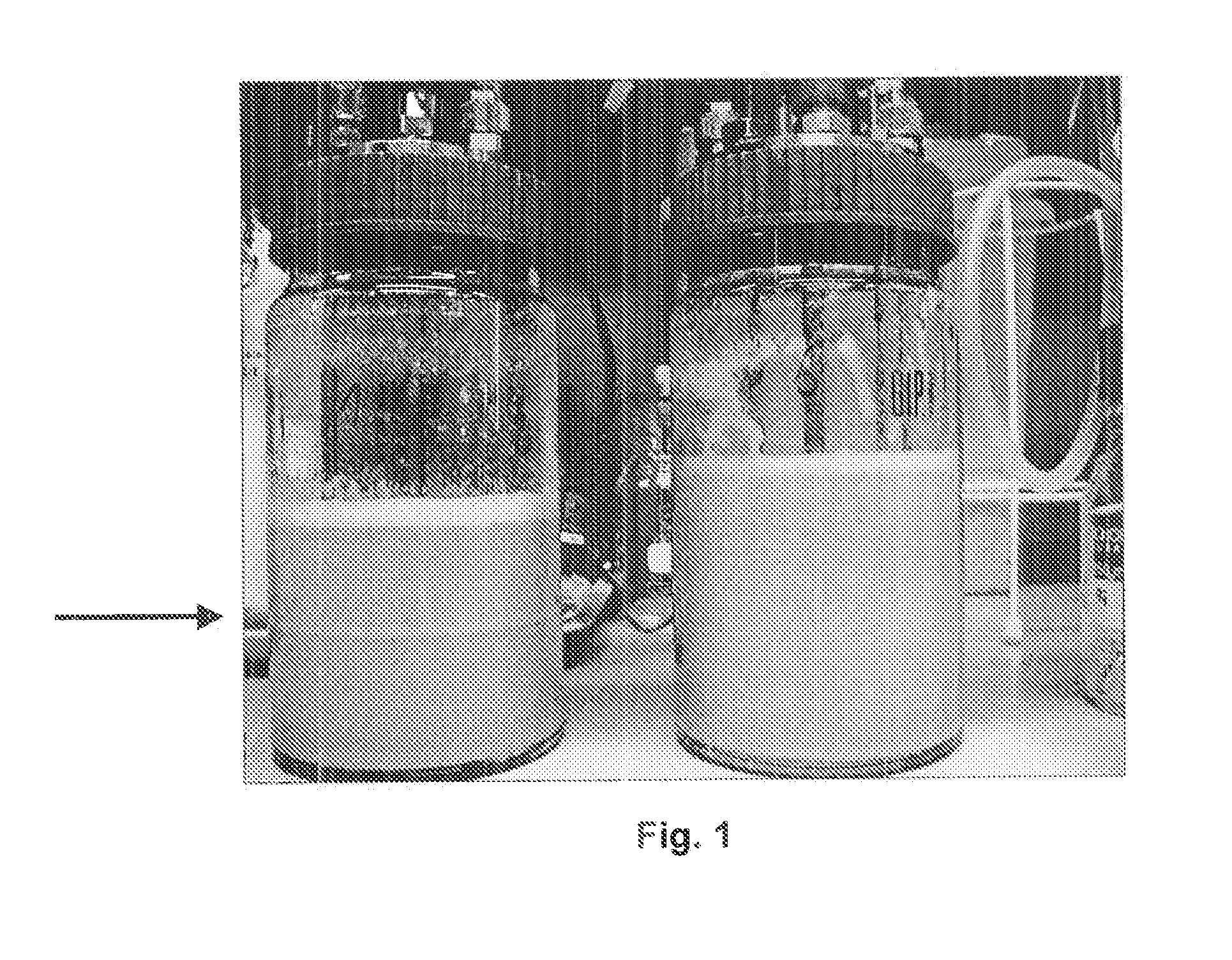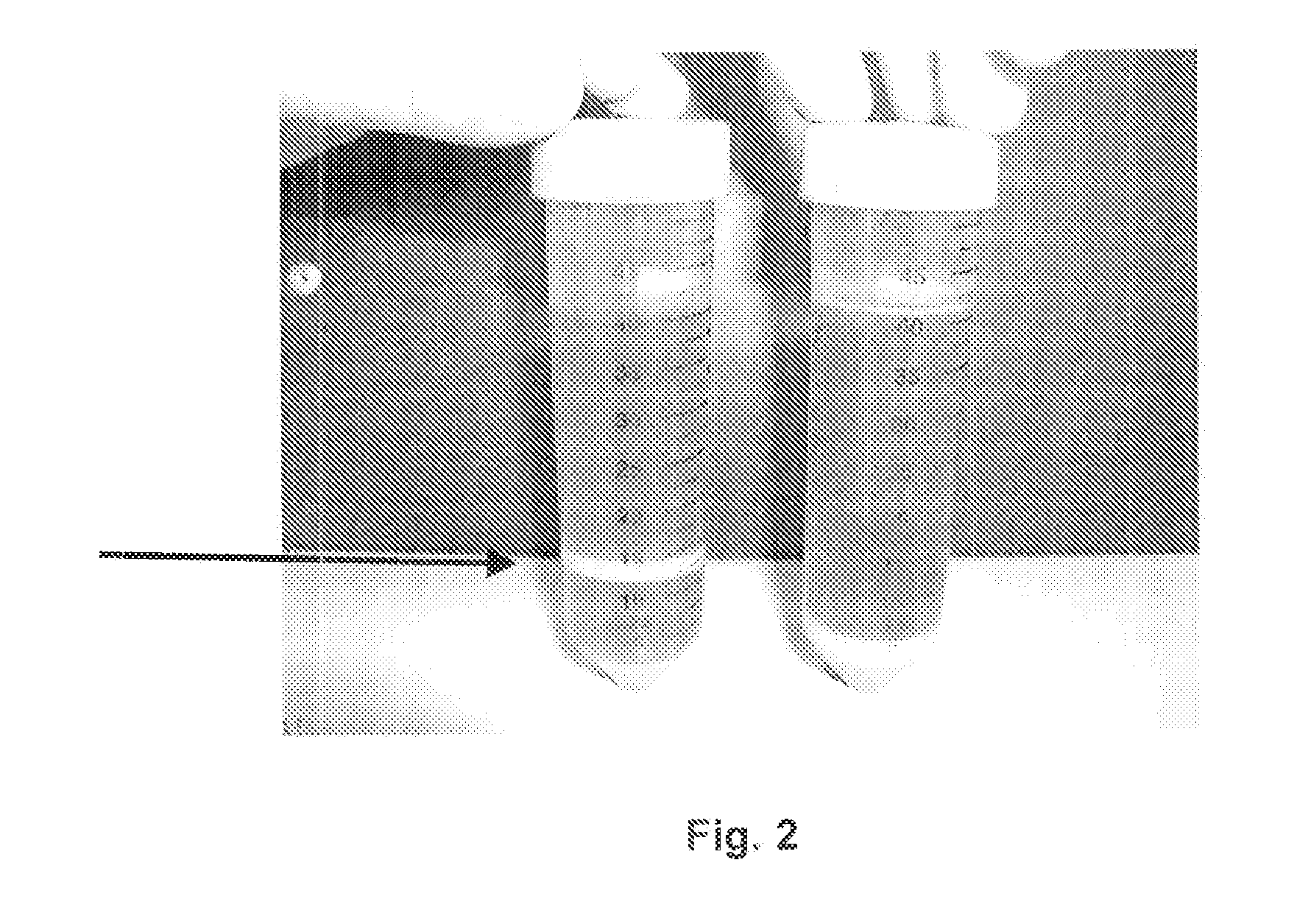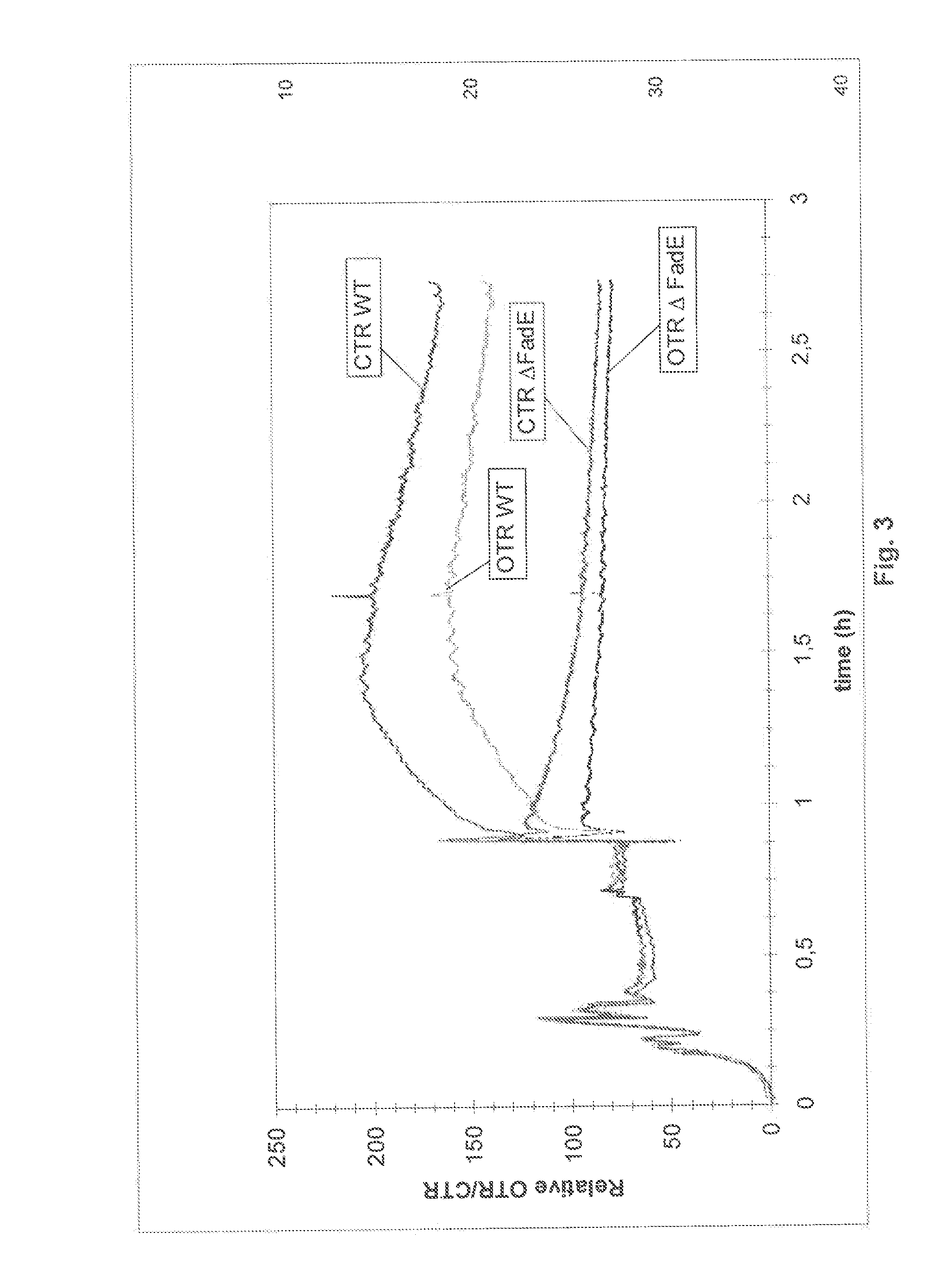Process for the improved separation of a hydrophobic organic solution from an aqueous culture medium
a hydrophobic organic solution and culture medium technology, applied in biochemistry apparatus and processes, microorganisms, enzymes, etc., can solve the problems of complicated transfer to the organic phase, general expediency, and less simple separation of organic hydrophobic solution from complex aqueous culture medium, so as to improve the separation of hydrophobic organic solution and improve preparation and production
- Summary
- Abstract
- Description
- Claims
- Application Information
AI Technical Summary
Benefits of technology
Problems solved by technology
Method used
Image
Examples
example 1
Acceleration of the separation of an aqueous from a hydrophobic phase using a Δ FadE mutant in the biotechnological production of aminolauric acid methyl ester
[0077]The biotransformation of lauric acid methyl ester to aminolauric acid methyl ester was carried out in the 8-fold parallel fermentation system of DASGIP using the strains W3110 A FadE [alkB-alaD-TA] and W3110 [alkB-alaD-TA]. W3110 [alkB-alaD-TA] is a strain of E. coli W3110 that comprises a pBR322-based plasmid with an oxidation and transamination system comprising oxidoreductase AlkB, alanine dehydrogenase and transaminase, as is described in WO2009077461. W3110 Δ FadE [alkB-alaD-TA] is identical with the latter strain, apart from the fact that the gene coding for FadE is deleted and the strain thus has no acyl-CoA dehydrogenase activity.
[0078]1 L reactors were used for the fermentation. The pH probes were calibrated by means of a two-point calibration using standard solutions of pH 4.0 and pH 7.0. The reactors were fill...
example 2
[0087]Acceleration of the separation of an aqueous from a hydrophobic phase using a Δ FadL mutant as well as a Δ Fade Δ FadL mutant in the biotechnological production of aminolauric acid methyl ester
[0088]Analogously to Example 1, further experiments using the strains
[0089]W3110 ΔfadL [alkB-alaD-TA] and
[0090]W3110 ΔfadE ΔfadL [alkB-alaD-TA] as well as
[0091]W3110 ΔfadE [alkB-alaD-TA] and
[0092]W3110 [alkB-alaD-TA]
[0093]were carried out as controls.
[0094]Again, the DASGIP 8-fold parallel fermentation system was used with exactly the same protocol and parameters as described in Example 1.
[0095]After the start of the biotransformation by addition of the lauric acid methyl ester / oleic acid mixture, samples were taken after 1.25, 2.5, 3.5, 20.5, 22.5 and 23.5 hours and worked up according to the abovementioned process. The results are summarized in FIGS. 5, 6 and 7.
[0096]After 24 hours, the biotransformations were terminated, pH, temperature and DO regulation were ended and the reactors we...
PUM
| Property | Measurement | Unit |
|---|---|---|
| Fraction | aaaaa | aaaaa |
| Hydrophobicity | aaaaa | aaaaa |
Abstract
Description
Claims
Application Information
 Login to View More
Login to View More - R&D
- Intellectual Property
- Life Sciences
- Materials
- Tech Scout
- Unparalleled Data Quality
- Higher Quality Content
- 60% Fewer Hallucinations
Browse by: Latest US Patents, China's latest patents, Technical Efficacy Thesaurus, Application Domain, Technology Topic, Popular Technical Reports.
© 2025 PatSnap. All rights reserved.Legal|Privacy policy|Modern Slavery Act Transparency Statement|Sitemap|About US| Contact US: help@patsnap.com



